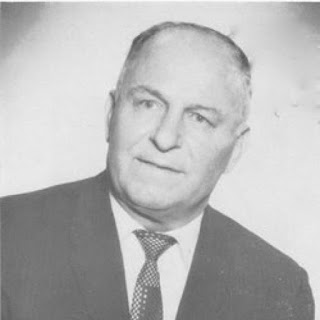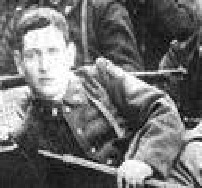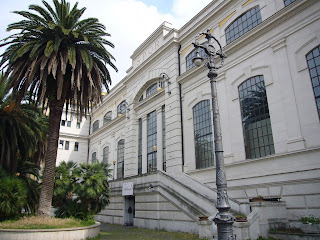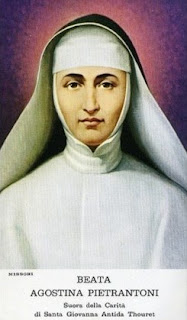World War I pilot claimed eight aerial victories
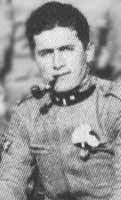 |
| Leopoldo Eleuteri in his pilot's uniform |
Eleuteri did not begin flying active combat sorties as a fighter pilot until February 1918 but progressed rapidly with the 70th Squadron of the Corpo Aeronautico Militare, the airborne arm of the Royal Italian Army.
He went on to fly more than 150 sorties and between April 1918 and October 1918 claimed eight enemy planes shot down, being eventually credited with seven successes in his own right.
Passionate about all forms of mechanised flight since he was a boy, Eleuteri volunteered for aeronautical service as soon as he was old enough.
He was a student in a technical school until he was conscripted in 1915. At first, he was assigned to duty in ordnance factories before being sent to join the 3rd Infantry Regiment of the Royal Italian Army.
 |
| An Ansaldo A1 Balilla similar to those flown by Leopoldo Eleuteri towards the end of the First World War |
In April 1917, Eleuteri mastered the two-seater Lombardy-built SAML aircraft and was posted first to the 73rd Squadron, stationed in Verona, which was later renamed the 121st Squadron. His first assignment while based in Verona was to defend the city from possible Austrian air strikes.
After flying a few sorties, he made an abortive attack on an observation balloon. Later that year, still flying SAMLs, following the army’s defeat at the Battle of Caporetto, he was lucky to survive after his plane was attacked by three enemy fighters above Asiago, about 21km (13 miles) northwest of Bassano del Grappa. The plane was hit several times and his co-pilot wounded, but they managed to limp back to base and land successfully.
At the beginning of 1918 he underwent training at Malpensa airfield near Milan to fly as a fighter pilot. Re-assigned to the 73rd squadron, based at San Pietro in Gu, 16km (10 miles) northeast of Vicenza, he teamed with fellow fighter pilots Aldo Bocchese, Alessandro Resch and Flaminio Avet, who often flew combat missions together.
In April, he staked claims to have shot down an Austro-Hungarian two-seater and two fighters in an aerial battle above the countryside of Valdobbiadene, a wine-growing area in the Veneto, about 40km (25 miles) northwest of Treviso. In the end, Eleuteri was credited with two victories.
 |
| Eleuteri learned to fly combat missions largely in two-seater SAML aircraft similar to the one pictured |
His final success came in October 1918, when he forced an Austro-Hungarian pilot to land on a Corpo Aeronautico Militare airfield at Arcade, just north of Treviso.
His prowess in airborne combat was rewarded three times with the Silver Medal for Military Valor, as well as the War Merit Cross.
After being discharged, Eleuteri returned to his engineering studies, enrolling at the Milan Polytechnic. He graduated in 1922.
In 1923, he joined the newly formed Royal Aeronautics as an officer in the engineering department,and was promoted to the rank of captain in October of that year. He was stationed at Furbara, about 50km (31 miles) northwest of Rome on the Tyrrhenian Sea.
Tragically, in January, 1926, Eleuteri was flying a simulated combat mission when his aircraft collided with the “enemy” plane. Both planes lost a wing and fell to the ground from about 1,000m (3,281ft), causing the death of both pilots.
The Castiglione del Lago fighter school was renamed in his honour, as was the flying club at Perugia airfield. There are statues of him in his home town, Castel Ritaldi, which has also named a street after him, and further monuments at the civil airport of Via Salaria in Rome and in Furbara.
 |
| The fortification of Castel San Giovanni is just outside the Umbrian town of Castel Ritaldi |
Castel Ritaldi, where Eleuteri was born, is a pretty hill town in the green countryside of Umbria, overlooking fields of wheat and barley, sunflowers, vines and olive groves. It is known for its woodland mushrooms and truffles and lies in the area that grows the sagrantino grape, from which is made the Montefalco Sagrantino and Montefalco Rosso wines. The well preserved Castel San Giovanni, which encloses a small village within its walls, can be found just outside the town. Castel Ritaldi is also known for the Palio del Fantasma, a lively Renaissance-costumed festival involving games of skill and chance that celebrates the visit to the town by Lucrezia Borgia.
 |
| Vines growing in the Valdobbiadene region, which produces Italy's world-famous prosecco sparkling wine |
The picturesque hills around Valdobbiadene, scene of Eleuteri’s maiden combat victories, are famous for the production of what is generally regarded as the best prosecco in Italy. It is largely made from Glera grapes and though the name comes from that of the village of Prosecco near Trieste, where the grape and wine originated, the only prosecco granted DOCG status - the classification granted to superior Italian wines - is produced from grapes grown on the hills between the towns of Conegliano and Valdobbiadene, or from a smaller area around the town of Asolo, north and west of Treviso.
Also on this day:
546: Rome is sacked by the Ostrogoths
1538: Pope Paul III excommunicates Henry VIII
1749: The birth of opera composer Domenico Cimarosa
1981: Red Brigades seize NATO boss in Verona
Home




